The College of Nanoscale Science and Engineering ("CNSE") of the University at Albany welcomed the 5000th student to participate in its NanoCareer Day program when it hosted more than 300 elementary, middle- and high-school students from upstate New York at CNSE's Albany NanoTech Complex on December 8.
Dec 9th, 2010
Read more
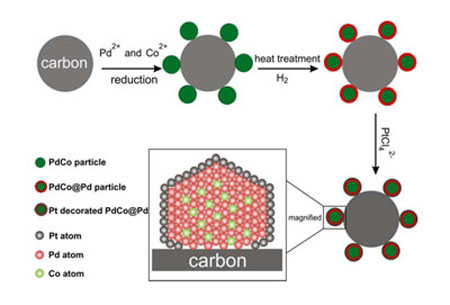 Fuel cells may power the cars of the future, but it's not enough to just make them work -- they have to be affordable. Cornell researchers have developed a novel way to synthesize a fuel cell electrocatalytic material without breaking the bank.
Fuel cells may power the cars of the future, but it's not enough to just make them work -- they have to be affordable. Cornell researchers have developed a novel way to synthesize a fuel cell electrocatalytic material without breaking the bank.
Dec 9th, 2010
Read more
 A Korean research team led by Jung-Hyurk Lim at Chungju National University in Chungju have now introduced a refined nanotip for this technique. With their "nanoquill", it is possible to produce complex nanopatterns from large biomolecules -- such as complete virus particles -- rapidly, precisely, and flexibly.
A Korean research team led by Jung-Hyurk Lim at Chungju National University in Chungju have now introduced a refined nanotip for this technique. With their "nanoquill", it is possible to produce complex nanopatterns from large biomolecules -- such as complete virus particles -- rapidly, precisely, and flexibly.
Dec 9th, 2010
Read more
Panasonic, core partner within imec's Human++ program, and imec today presented at the International Electron Devices Meeting in San Francisco various critical components of a biomedical lab-on-chip sensor enabling fast detection of Single Nucleotide Polymorphisms (SNPs) in DNA, such as a miniaturized pump for on-chip generation of high pressures, a micropillar filter optimized for DNA separation achieving world-record resolution, and a SNP detector allowing on-chip detection using very small sample volumes.
Dec 9th, 2010
Read more
Versatile electronic gadgets should employ a number of important criteria: small in size, quick in operation, inexpensive to fabricate, and deliver high precision output. A new microlaser, developed at the Jozef Stefan Institute in Ljubljana, Slovenia embodies all these qualities. It is small, tunable, cheap, and is essentially the world's first practical three-dimensional laser.
Dec 8th, 2010
Read more
A team of University of California, San Francisco (UCSF) researchers has engineered E. coli with the key molecular circuitry that will enable genetic engineers to program cells to communicate and perform computations.
Dec 8th, 2010
Read more
Researchers use magnets to tune supercooled gallium arsenide semiconductors.
Dec 8th, 2010
Read more
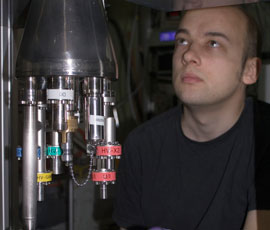 Researchers from Queen Mary, University of London (UK) and the University of Fribourg (Switzerland) have shown that a magnetically polarised current can be manipulated by electric fields.
Researchers from Queen Mary, University of London (UK) and the University of Fribourg (Switzerland) have shown that a magnetically polarised current can be manipulated by electric fields.
Dec 8th, 2010
Read more
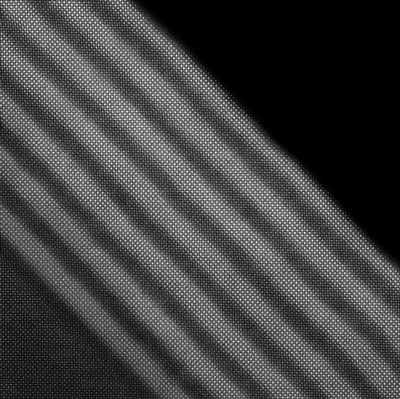 The MBE facility, located at Argonne National Laboratory, could provide the basis for new materials to improve fuel cells, electronics and batteries.
The MBE facility, located at Argonne National Laboratory, could provide the basis for new materials to improve fuel cells, electronics and batteries.
Dec 8th, 2010
Read more
Paul Haney and Mark Stiles of the CNST have developed a theory of current-induced torques that generalizes the relationship between spin transfer torques, total angular momentum current, and mechanical torques, and is applicable to a much wider range of materials than previous theories.
Dec 8th, 2010
Read more
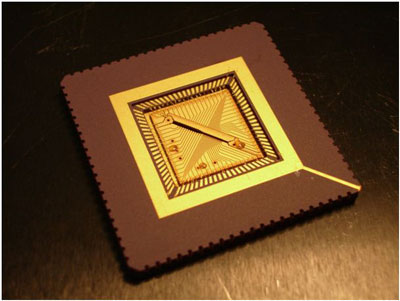 Das Bundesministerium fuer Bildung und Forschung (BMBF) hat rund 13 Millionen Euro fuer insgesamt vier Verbundprojekte im bereich Anwendung von Quantentechnologien in der Informationstechnik zur Verfuegung gestellt.
Das Bundesministerium fuer Bildung und Forschung (BMBF) hat rund 13 Millionen Euro fuer insgesamt vier Verbundprojekte im bereich Anwendung von Quantentechnologien in der Informationstechnik zur Verfuegung gestellt.
Dec 8th, 2010
Read more
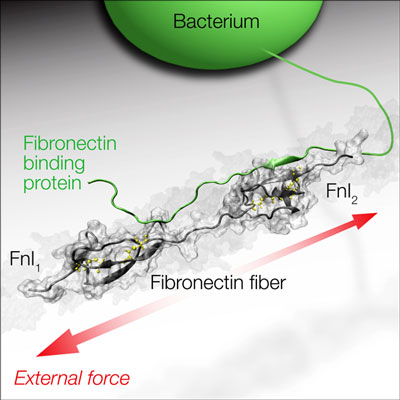 Researchers studied how the tensile forces by which cells stretch connective tissue fibres affect the interaction between bacteria and fibronectin.
Researchers studied how the tensile forces by which cells stretch connective tissue fibres affect the interaction between bacteria and fibronectin.
Dec 8th, 2010
Read more
The NanoTrust project of the Institute of Technology Assessment of the Austrian Academy of Sciences has published several dossiers on important information about nanotechnology.
Dec 8th, 2010
Read more
The White House Office of Science and Technology Policy and the Nanoscale Science, Engineering, and Technology Subcommittee of the National Science and Technology Council request comments from the public regarding the draft National Nanotechnology Initiative (NNI) Strategy for Nanotechnology-Related Environmental, Health, and Safety Research.
Dec 8th, 2010
Read more
Today at the International Electron Devices Meeting in San Francisco imec presents an ultra-thin hybrid AlGaN-on-Si-based extreme ultraviolet (EUV) imager with only 10um pixel-to-pixel pitch.
Dec 8th, 2010
Read more
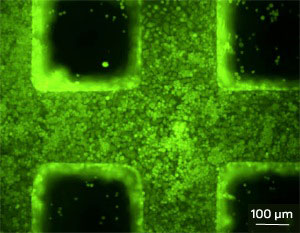 The repair of organs, such as human kidney and liver, hinges on the development of three-dimensional (3D) tissue scaffolds with well-defined microstructures. Andrew Wan, Jackie Y. Ying and co-workers at the A*STAR Institute of Bioengineering and Nanotechnology have now developed a photolithography method that can be used to fabricate microstructured 3D tissue materials with high precision.
The repair of organs, such as human kidney and liver, hinges on the development of three-dimensional (3D) tissue scaffolds with well-defined microstructures. Andrew Wan, Jackie Y. Ying and co-workers at the A*STAR Institute of Bioengineering and Nanotechnology have now developed a photolithography method that can be used to fabricate microstructured 3D tissue materials with high precision.
Dec 8th, 2010
Read more








 Subscribe to our Nanotechnology News feed
Subscribe to our Nanotechnology News feed